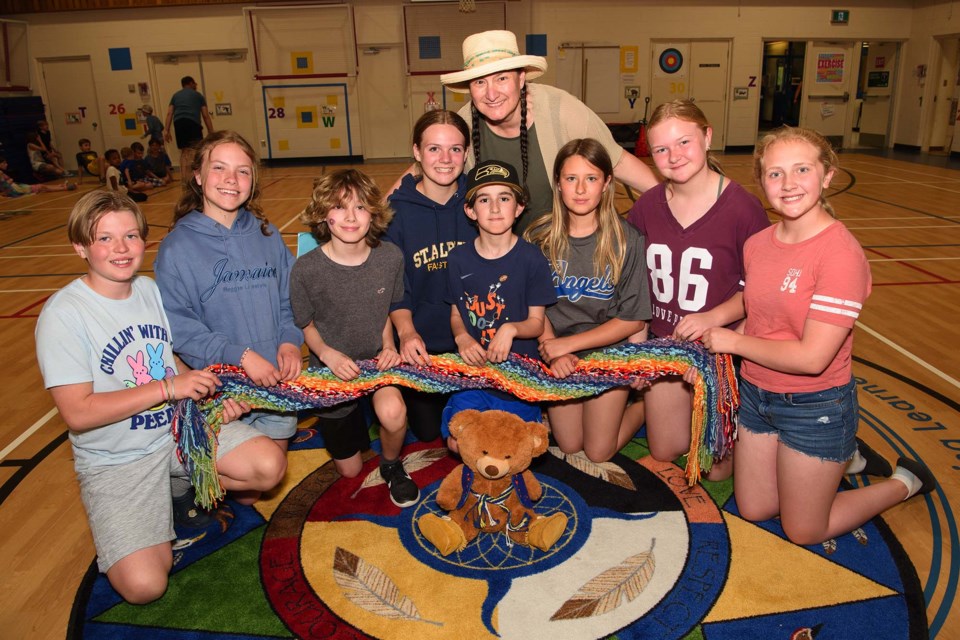Sir Alexander Mackenzie students have come together this spring to craft a Métis mega-sash to represent their school.
SAM students ooed and awed May 19 when they got their first official glimpse of a project they had been working on since March: a rainbow-coloured Métis sash made from some 460 mini-sashes, each hand-woven by one of the 460 staff and students at the school.
The project was the brainchild of Métis knowledge keeper Celina Loyer, who assembled the mini-sashes into the mega-one over the last few months.
Students heard how the sash symbolized diversity and the beauty of variety, and how people, like threads, can come together and support each other.
Loyer encouraged the students to think of their connections to each other when they touched the sash.
“This is something you made. Every one of you is a part of this.”
Métis multi-tool
SAM principal Dawn Rothwell said the idea for the school sash came out of a meeting last fall when staffers were looking for a project that would bring Indigenous teachings to the whole school.
“Celina in that meeting came up with the idea of weaving a sash,” Rothwell said, and used a handful of yarn and a scrap of paper with her ideas on it to explain the concept.
Virtually everyone in the fur trade, Métis or not, had a Métis sash on their hips or chest back in the day, Loyer explained.
“It was like a multi-tool,” she said, used by the voyageurs as a tool belt, rope, back support, sling, and what we would now call a fanny pack.
The Métis sash was banned after the 1885 North-West Resistance, and many of them were destroyed, Loyer said. The 1960s saw a resurgence of Métis culture in Canada, and with it, the sash, which is now seen as a symbol of Métis pride and identity.
While modern sashes are machine-woven, Loyer said she had the SAM students weave their mini-sashes by hand as per tradition. This practice of finger-weaving comes out of Quebec and eastern Canada, with certain patterns associated with specific regions (such as the Assomption or “arrow” sash from L’Assomption, Que.).
Loyer said each student and staff member at SAM wove a pair of roughly two-by-20 centimetre sashes for this project back in March — one to keep, and one for the mega-sash. Each grade used a different combination of colours so that the finished sash would represent the many peoples of Canada. She then spent about 18 hours weaving the mini-sashes into ropes and the ropes into the mega-sash, which, thanks to some careful math, ended up roughly the same size as a traditional Métis sash.
Loyer said she used the sash to teach students about how St. Albert was a Métis community long before Father Lacombe arrived here, and how the Métis valued concepts such as teamwork and mutual support.
“Even if one of these strings gets broken or cut, the others will still support it,” she said, explaining the metaphor of the sash.
Rothwell said the sash project built community and fostered a sense of connection amongst everyone at the school.
“The sash is a beautiful representation of weaving together diversity in a community,” she said.
Loyer said the finished sash will now tour the school so everyone can get hands-on with it. Its final resting place has yet to be determined.
“It may eventually end up being semi-nomadic like the Métis people and travel through the school!” Loyer joked.




